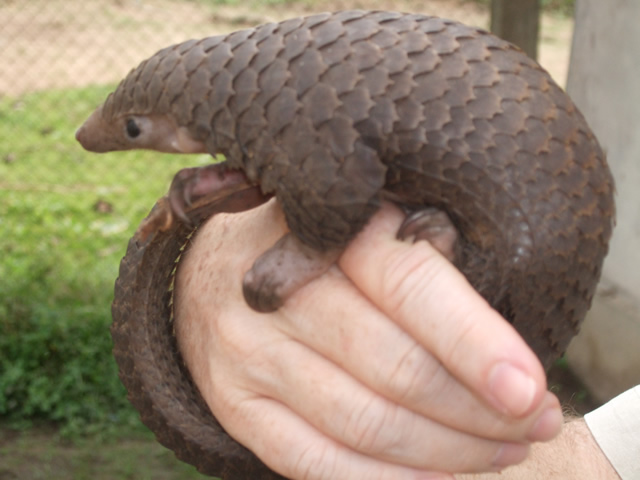Pangolins play an important ecological role, providing ‘pest’ control and improving soil quality.
What the heck is a pangolin? Aside from being a very unique, insectivorous creature and the most trafficked mammal in the international illegal wildlife trade, these scaly anteaters also have a job — a very important one!
Pangolins provide earth with all-natural
pest control and are fantastic tenders of soil, and they do these things
simply through their everyday behaviors. Tens of millions of years of pangolin evolution have produced an
incredible specimen that is perfectly adapted for the niche they occupy.
Their mere presence, in conjunction with that of the other organisms
and processes within the habitat they live in, is absolutely imperative
to continued healthy ecosystem functioning.
Pangolins are soil caretakers
Their large and elongated claws enable them to burrow underground for shelter and to excavate ant and termite nests for food. In doing so, the soil is mixed and aerated—much like what happens when we rototill gardens or plow crop fields.
This improves the nutrient quality of the soil and aids the
decomposition cycle, providing a healthy substrate for lush vegetation
to grow from. When abandoned, their underground burrows also provide habitat for other animals.
Forget the exterminator, call in the pangolin!
It is said that a single pangolin consumes as much as 70 million insects per year—mainly ants and termites. Seventy million! That’s about 191,780 insects per day! Imagine an area that is home
to 15 pangolins. Those animals alone could potentially eat as many as
1.05 billion insects annually!
Comparatively, the U.S. National Park Service says individuals of some bat species are said to eat as many as 3,000 bugs each night, which could mean a total of almost 1.1 million a year. As you can imagine, pangolins certainly help to control their insect
prey’s numbers, contributing to the delicate balance of the ecosystems
they inhabit.
However, humans also benefit from the pangolin’s work. Researchers at Ohio State University claim billions of dollars are spent annually on repairing termite damage and treating and preventing infestations. Healthy populations of scaly anteaters throughout their historic range can help to alleviate these problems.
Don’t fire the pangolins!
Ecosystems are maintained only when all of their components—biotic
and abiotic—work synergistically, with each one doing its “job”. The extinction of pangolins may seem like a minimal loss, but the
more parts you remove from a system, the closer it becomes to collapse.
Poaching pangolins to supply black market demand
for their flesh, scales, and fetuses—which stems from East and
Southeast Asia, particularly China and Vietnam—has become the number one
threat to these magnificent creatures. This threat is closely followed by habitat loss. Daily, we are inching closer and closer to losing pangolins forever, as a result.
The existence of forests where pangolins “work” and live relies on
these insectivores to do their “jobs”. It’s up to us to make sure
pangolins aren’t exterminated, themselves!
Watch some pangolin pest control in action in this video from National Geographic!
Resource: pangolins.org
